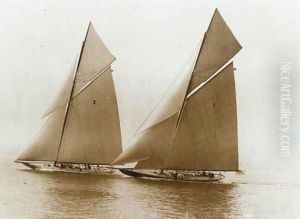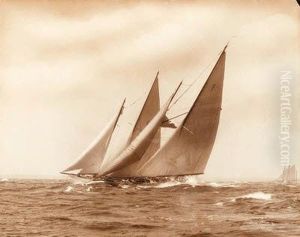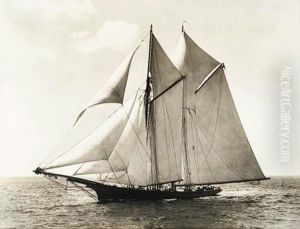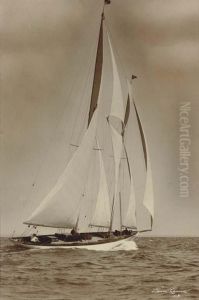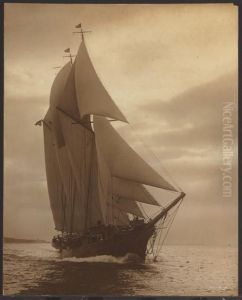Edwin Levick Paintings
Edwin Levick was a renowned photographer, best known for his work capturing the dynamic energy and elegance of maritime subjects, particularly during the golden age of sail and the early development of yachting in the 20th century. Born in 1869 in London, England, Levick developed an early interest in photography, a field that was rapidly evolving during his lifetime due to technological advancements.
Levick's passion for the sea and ships led him to specialize in nautical photography. He emigrated to the United States, where he eventually became the preeminent maritime photographer of his time. Based in New York City, Levick's proximity to the bustling harbors and the burgeoning American yachting scene provided ample subjects for his work. He captured majestic images of grand yachts, regattas, and the hustle of harbor life, offering a visual chronicle of a pivotal era in maritime history.
His photography was characterized by a unique ability to convey the movement and grace of sailing vessels, as well as the excitement of sea races. Levick's work was widely published in his time, gracing the pages of magazines and newspapers, and was sought after by both private yacht owners and shipbuilding companies who wished to document their vessels. He also provided a valuable service to historians and enthusiasts, preserving the legacy of sailing craft that would soon be overtaken by motorized ships.
Edwin Levick's contribution to maritime photography continued until his death in 1929. His extensive collection of photographs has since been preserved and serves as an important historical archive, offering insight into the maritime culture of the early 20th century. Levick's images remain a testament to the beauty of sail and the skill required to capture such ephemeral moments on camera.
